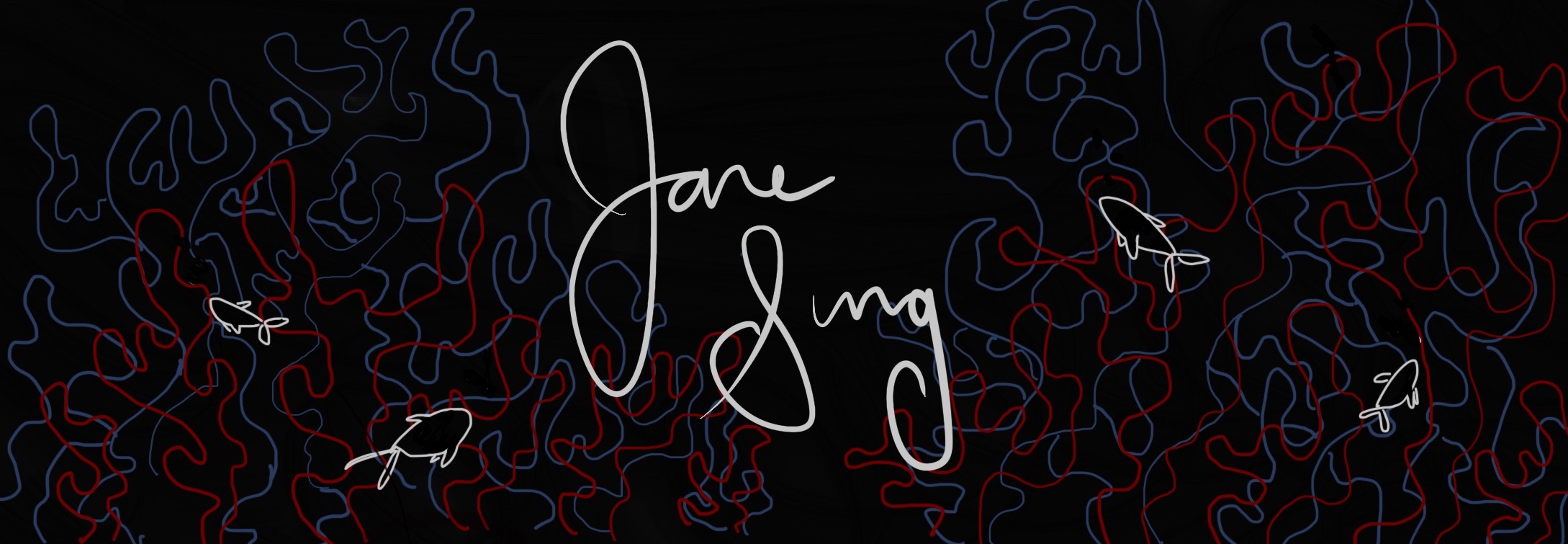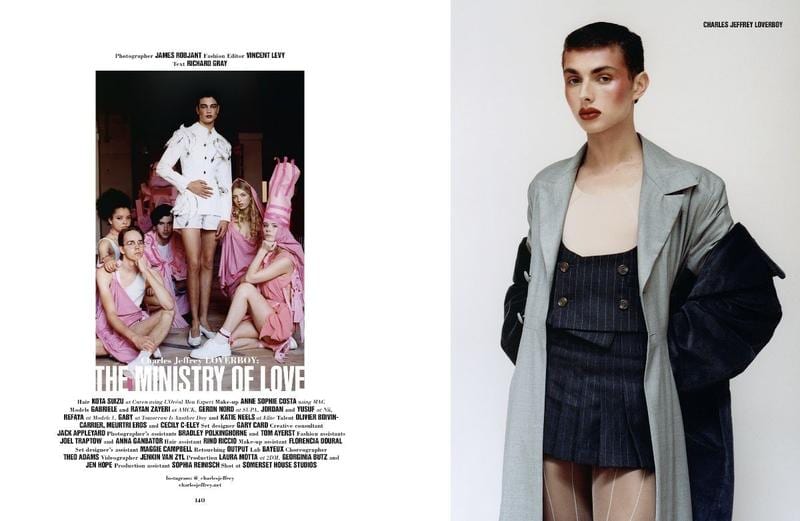Charles Jeffrey’s Loverboy campaign, and general ethos stands to go against the traditional gender norms of the beauty and fashion industry. Many aspects of these ads from makeup to styling to casting are aimed to blur the lines between gender and dress. “Becoming visibly gendered…involves engagement with complicated, shifting coding systems of colors, fabrics, trims, forms, shapes, and patterns and other body fashioning.” The reading speaks about society enforcing certain gender codes through clothing from an early age and how certain traditions have become embedded into culture and are considered the “norm.” Charles Jeffrey takes clothing that are associated with male stereotypes like the suit and changes the construction to push and blur the boundaries of what can be considered “masculine.” Though the pinstriped suiting and double breasted detailing are kept to tradition, the male models are wearing skirts with high hemlines and low cut chests which defies the gender codes of sartorialist male conservatism in traditional tailoring and dress. Make up is done in a dramatic way that is usually only associated with females and expression of femininity. But because these acts are performed on male models, it begins to question what boundaries and associations are placed around items of clothing and why they are there. Men look good in skirts and makeup so why can’t it be normal for them to wear it as well. “‘Fashion’ seems to imply femininity as a process of frivolous change, colorful details, and unnecessary flounces, and superficiality,” yet the advertisement with the model standing powerfully in the center defies this belief and proves that fashion and the male figure can go hand in hand.
Powered by WordPress and WPExplorer Themes

